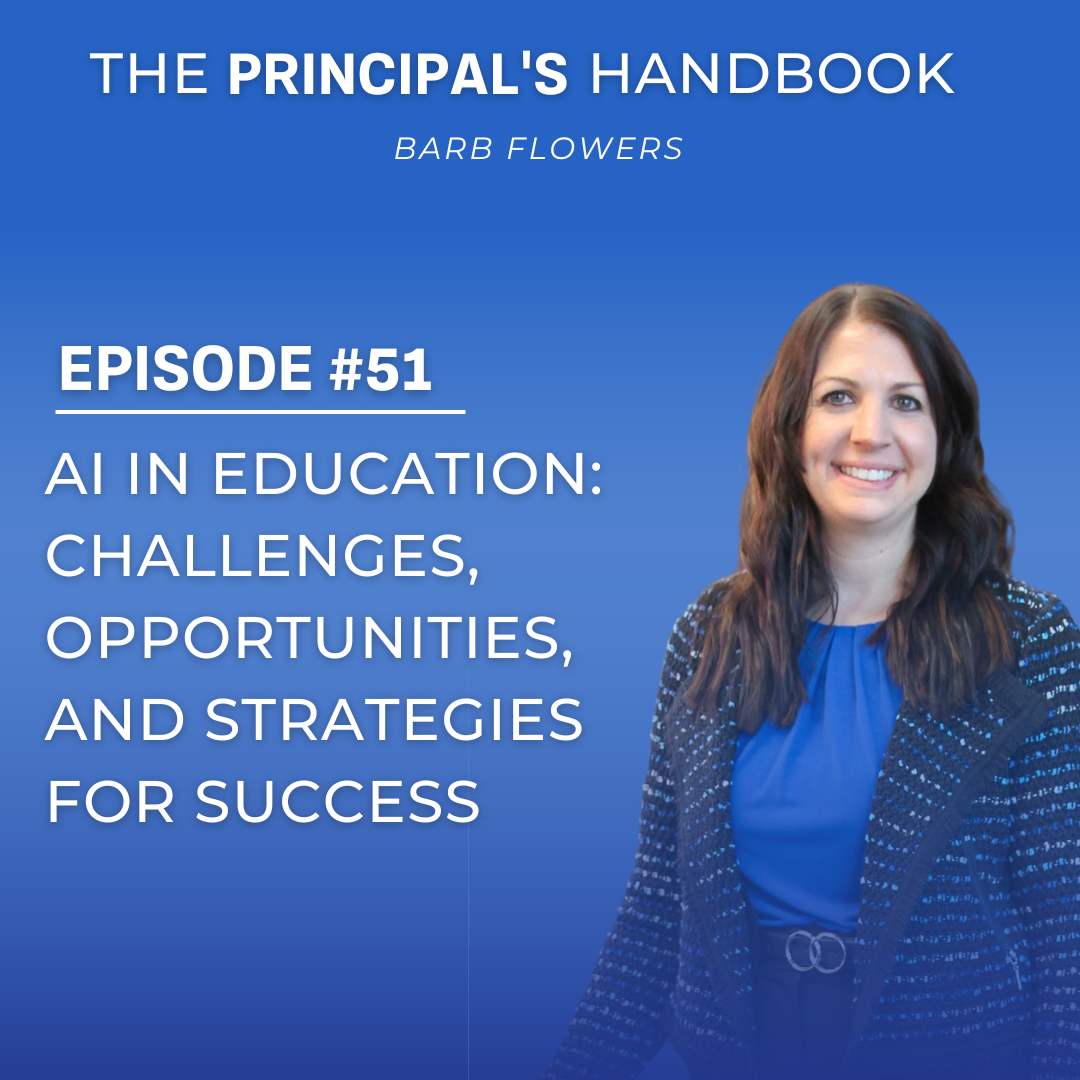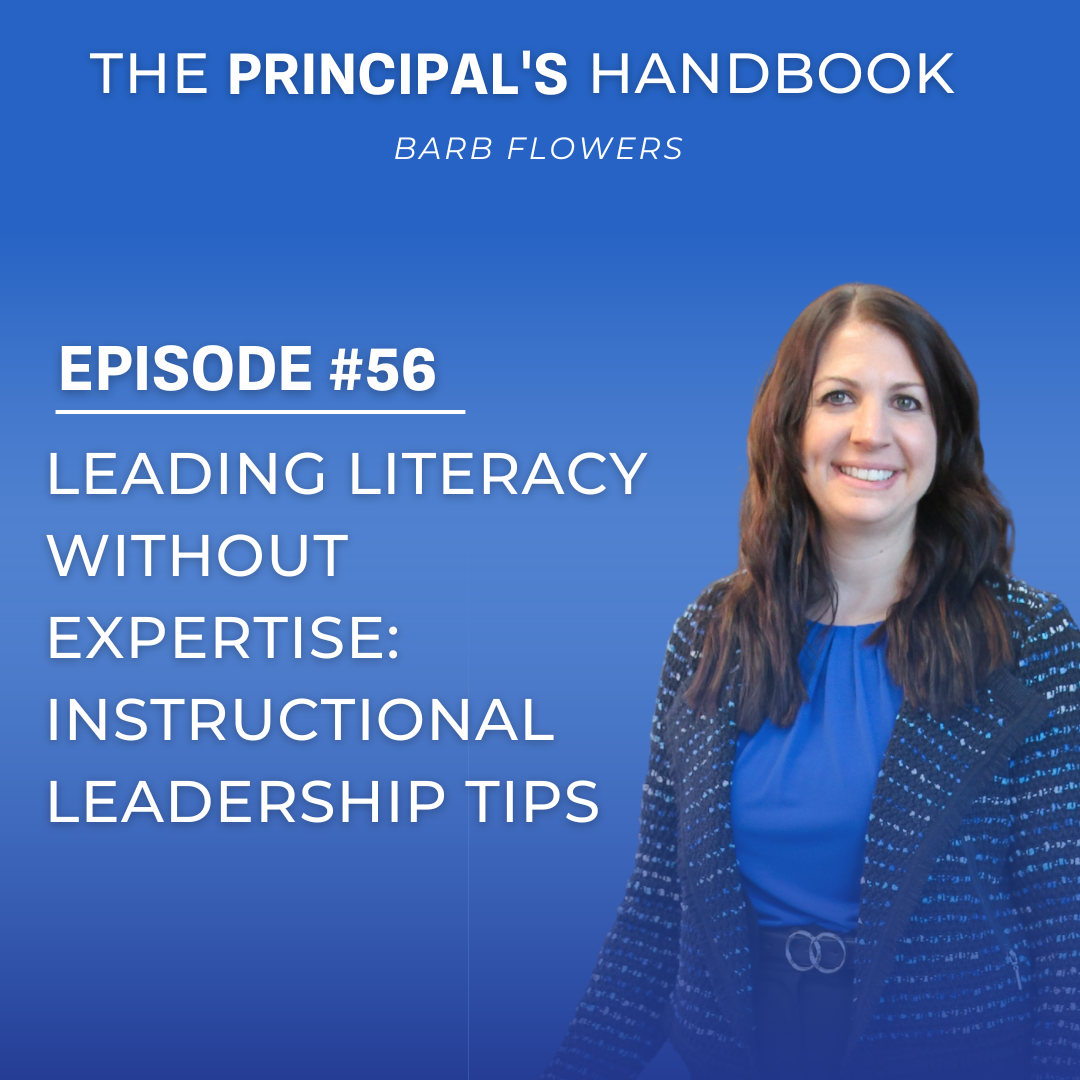00:00:00] Welcome to the Principal’s Handbook, your go-to resource for principals looking to revamp their leadership approach and prioritize self-care. I’m Barb Flowers, a certified life coach with eight years of experience as an elementary principal. Tune in each week as we delve into strategies for boosting mental resilience, managing time effectively, and nurturing overall wellness.
From tackling daily challenges to maintaining a healthy work-life balance, I’m Barb Flowers. Together, we’ll navigate the complexities of school leadership. Join me in fostering your sense of purpose as a principal and reigniting your passion for the job. Welcome to a podcast where your well-being is the top priority.
Welcome, everyone. I’m excited today to have a guest, Preton Shaw, with us. Preton, would you like to introduce yourself and share your experiences in education?
Preton Shaw:
Thank you for having me on the show. My experience is varied, so I’ll stick to the highlights relevant to our conversation today. I come from a philosophy and policy background. My undergraduate education is in philosophy, and I earned my master’s in education with a focus on policy. I like to think about the philosophical implications of the technological changes happening in education, while also considering the policies we need to adapt to those changes.
I also code and develop EdTech tools to stay up to date with technological advancements. These interests come together in my current work in AI education. I recently wrote a book titled AI and the Future of Education, published by Wiley last fall, with the one-year anniversary just around the corner. I also provide professional development, run accredited courses, and build AI-related tools for teachers and students.
Barb:
That’s fantastic. I remember learning about AI, like ChatGPT, about a year ago. I instantly loved it because I’ve always struggled with writing. Over the last year, I’ve learned how teachers can use AI to reduce their workload and avoid burnout. So, how can AI be a tool to help teachers mitigate burnout?
Preton Shaw:
There are several ways AI can help teachers reduce their workload, especially outside of the classroom. A lot of the administrative work, like generating formative exercises and assessments, can be offloaded to AI. I don’t believe every student needs an AI bot in front of them, but teachers can use AI to quickly create assessments, worksheets, and rubrics.
This is especially helpful when teachers want to adapt their classrooms to more project-based learning or mastery-based grading. These approaches require a lot of preparation, and AI can help generate the materials needed to execute them more effectively. The key is for teachers to experiment with one lesson that they feel isn’t working as expected and see how AI can help them improve it.
Barb:
What risks should teachers consider when using AI, and how could it actually lead to burnout?
Preton Shaw:
That’s a great question. Initially, when AI tools like ChatGPT gained popularity, many were excited because of their potential to make teaching easier. However, there’s an enormous learning curve that can lead to more work, rather than less. Teachers need time to learn how to use the tools effectively, and in some cases, adapting their assessments to be “AI-proof” takes even more time.
This becomes especially evident when teachers need to update their teaching materials for the new technology. Many teachers were still hesitant to embrace AI last year because they were learning about the tools on their own. The challenge is that, without sufficient institutional support or professional development, teachers end up spending more time figuring out how to use AI rather than simply benefiting from it.
There are also concerns about biases in AI tools and data privacy, which are valid and should be addressed. However, these concerns can prevent teachers from embracing AI, which can add stress to an already overwhelming workload.
Barb:
It sounds like there’s a balance to strike. How can teachers use AI with their students in a responsible way, especially with some schools banning tools like ChatGPT?
Preton Shaw:
Teachers want to be able to have open conversations with their students about AI, guiding them on productive uses of the technology. The concern that AI is only for cheating is rooted in some truth, but it’s not the full story. As more teachers get comfortable with AI, they’ll realize that it can be a powerful learning tool, not just a shortcut for students to cheat.
The key is educating students about responsible usage. It’s about teaching them to use AI as a resource, just as they would use a dictionary or calculator. Schools should be having these conversations, but teachers need the knowledge to lead them. If students are using AI tools outside of school, it’s vital that teachers are equipped to teach them how to use them responsibly in the classroom.
Barb:
That’s really helpful. Now, if a teacher finds that their district isn’t offering support for AI, what should they do to get started?
Preton Shaw:
There are two main places to start: First, seek out online resources such as PDFs, books, or video courses. Many free or low-cost options provide a basic introduction to AI in education, explaining the technology and its potential uses.
But don’t get lost in endless information-seeking. If you keep looking for more resources, you’ll end up overwhelmed. Instead, dive in and start experimenting with tools like ChatGPT or Claude. Both are free, powerful, and can help you get a hands-on feel for the technology. Once you’ve played around with these tools, have conversations with your students about how they’re using AI and how it can support their learning.
Barb:
What recommendations do you have for principals looking to support teachers in implementing AI tools?
Preton Shaw:
The first step is providing professional development. Even if there’s someone on campus who’s already familiar with AI, it’s important to set aside time for a peer-led workshop to help teachers get up to speed. Also, consider offering regular updates through newsletters or brief memos, so teachers are aware of the latest AI developments.
Principals should also help develop AI policies at the school level. Clear, consistent policies on AI usage help ensure that every teacher is on the same page. Schools need flexible policies that allow teachers to experiment with AI while ensuring fairness in the classroom.
Finally, consider allocating part of the budget to ensure teachers have access to the right AI tools. While many free tools exist, paid options can offer more robust features that make AI integration much easier.
Barb:
Are there any paid AI tools you would recommend for schools?
Preton Shaw:
While tools like ChatGPT and Claude are great for teachers, there are also student-facing tools like Conmigo and SoPra.ai that help provide teacher oversight. If you’re a Google school, Google now offers AI features within its G Suite for Education, which can be useful for schools already using Google products.
However, I still think that tools like ChatGPT and Claude are sufficient for most classroom needs. Teachers can rely on these for everything from lesson planning to assessments without needing additional, costly tools.
Barb:
In what ways do you think AI can help principals reduce workload and burnout?
Preton Shaw:
AI can help streamline administrative tasks, like creating templates for permission slips, reports, and emails. These repetitive tasks can take up a lot of time, and AI can handle them quickly. It can also help with research and policy drafting, making it easier for principals to find resources or generate content.
In addition, AI tools can help create reports and assist with communication. This reduces the burden on principals and allows them to focus on more impactful aspects of leadership.
Barb:
That’s great advice. Finally, could AI help principals recognize writing styles, similar to how it can with teachers?
Preton Shaw:
Yes, AI tools can analyze writing styles, but they’re not fully reliable yet. However, they can provide summaries of a person’s writing style and generate content based on that analysis. Google’s Notebook LM is a tool that allows users to upload documents and use them to generate more content, making it an ideal choice for principals who want to maintain a consistent voice.
Barb:
Thank you so much for being here today, Preton. We’ve covered a lot, and I think this conversation will continue evolving as AI continues to improve. Any last thoughts?
Preton Shaw:
I just hope everyone takes a deep breath this summer and finds some time to relax before diving back into the school year. As AI continues to evolve, there will be more updates, but for now, it’s important to stay informed and ready for what’s coming next.
Barb:
Thank you for sharing your insights today!






